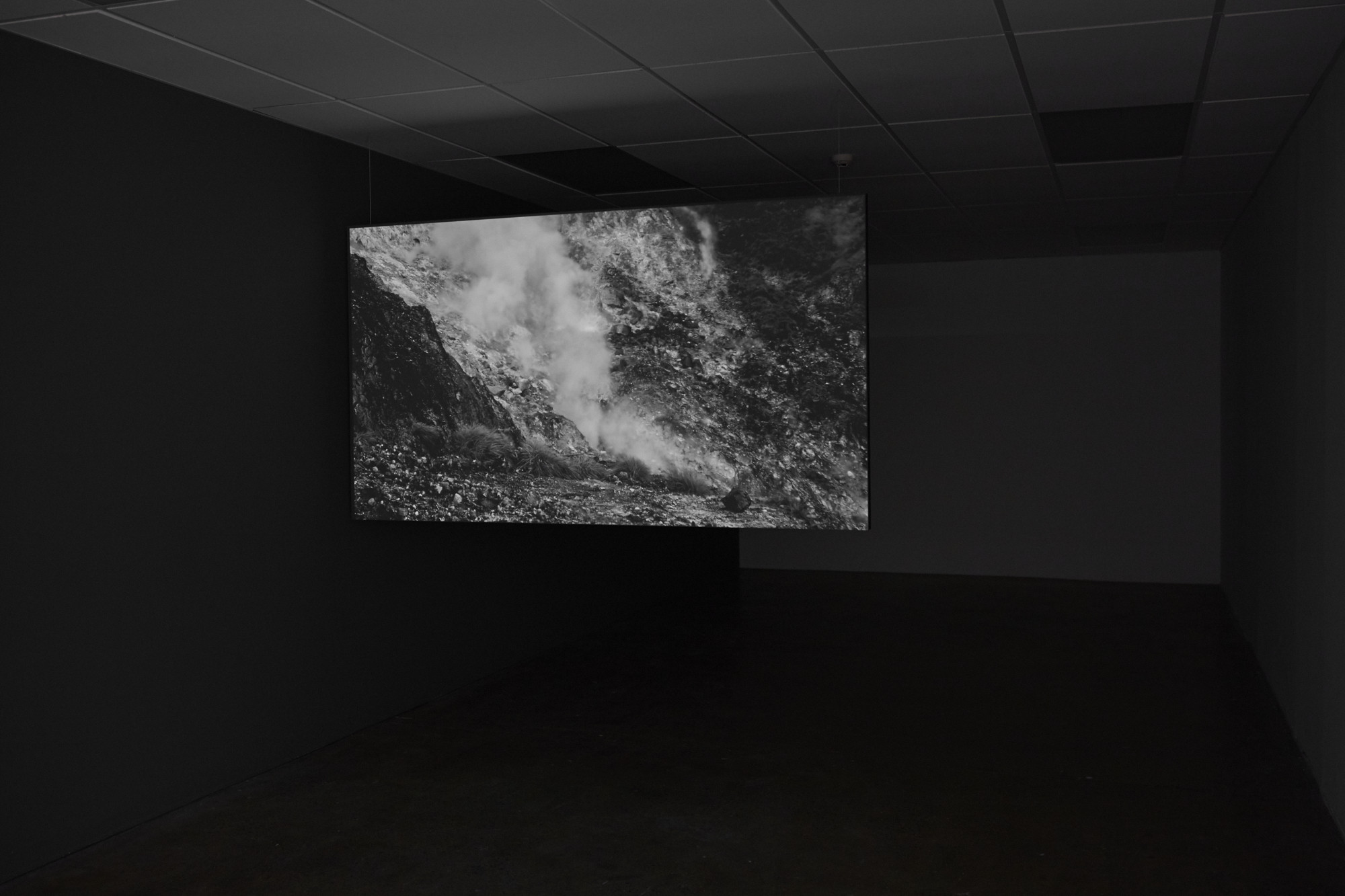Shannon Te Ao: te huka o te tai







As part of Singular Pluralities ∞ Plural Singularities
Three solo shows in parallel
Shannon Te Ao
te huka o te tai
In collaboration with Taipei Contemporary Art Centre (TCAC) and with the kind support of CNZ’s Asia/NZ Co Commissioning Fund, Artspace is proud to present Shannon Te Ao’s new works focusing on his artistic methodology and collaborative thinking. Investigating the epistemological relationship between an ongoing interest in waiata and te reo Māori, using these as potential connectors between Taiwan’s complex recent history. Te Ao echoes the tradition of landscape painting within this new filmic proposition that belongs to a particular land, and the absence or presence of a community. This exhibition will also draw connections to a number of recent new works presented within the Learning, Unlearning, Relearning research area. Te Ao produced a pair of unique notebooks and a number of newly translated text based works with local artists and collaborators in Taipei during his recent residency organised by TCAC. These will be presented alongside his recent collaborative work with Daniel Reimer-Maier, which was previously exhibited at the Lorne St. off site venue for the exhibition Politics of Sharing: on Collective Wisdom.
The video installation in the exhibition depicts a split vision of physicality—as located within the environment and then enacted within the creative process. Both reflect upon a primal tendency in us to use the things around us within the task of retention; whether it relates to the histories that a place is founded on or the ability of artistic response to propose a relationship through space and time.
Shannon Te Ao is an artist currently based in Wellington, New Zealand,
and is the winner of the 2016 Walters Prize. Working predominantly
within performance and video based practices Te Ao’s recent work
has seen him draw from a range existing literary material including
Māori lyrical sources. Whakataukī and waiata; using these as a bridge
between the physical and emotional within his developing filmic
language, grounded in documented performance and moving image
installation.